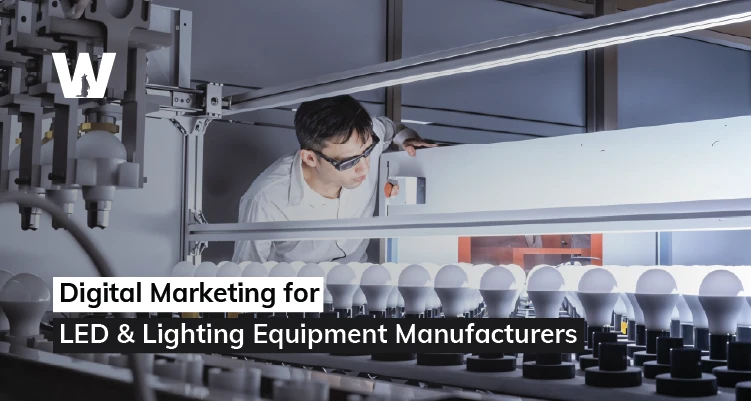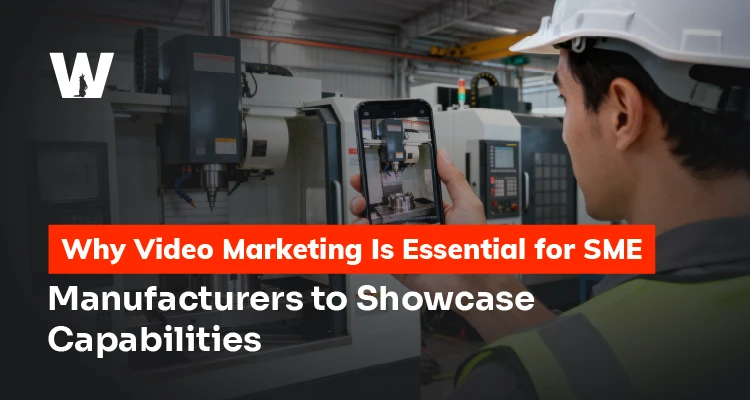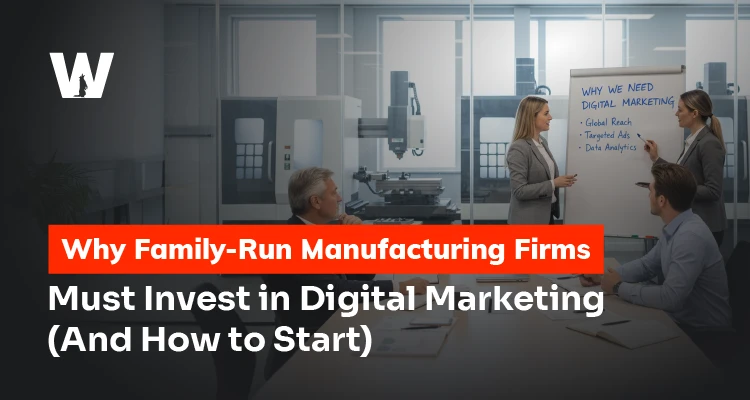Wraps up in 11 Minutes
LED and lighting equipment manufacturers can achieve 300% higher lead generation by implementing targeted digital marketing strategies including SEO optimization, B2B PPC campaigns, content marketing, and AI-driven automation. The key is understanding your buyers' journey from awareness to purchase decisions while leveraging data-driven insights.
In today's competitive lighting industry, traditional marketing approaches are no longer sufficient. LED manufacturers and lighting equipment companies must embrace comprehensive digital marketing strategies to reach global buyers, generate qualified leads, and establish market authority. This guide reveals proven strategies that successful lighting manufacturers use to dominate online visibility and accelerate business growth.
Why LED & Lighting Equipment Manufacturers Need Digital Marketing
The lighting industry has transformed dramatically. B2B buyers now conduct 67% of their research online before contacting suppliers. For LED manufacturers and lighting equipment companies, this shift represents both a challenge and an unprecedented opportunity.
The Digital Transformation of Lighting Industry
Modern procurement teams in construction, architecture, and industrial sectors rely heavily on digital channels to:
- Compare lighting solutions and specifications
- Research energy efficiency ratings and certifications
- Evaluate supplier credibility and case studies
- Request quotes and technical documentation
Key Statistics:
- 89% of B2B lighting buyers use search engines during vendor research
- Companies with strong digital presence see 2.8x revenue growth
- LED manufacturers with optimized websites generate 55% more qualified leads
Without a robust digital marketing strategy, lighting manufacturers risk invisibility in critical decision-making moments.
Industry Insight: Forward-thinking lighting companies that invested in digital marketing during 2020-2024 captured 40% more market share compared to traditional competitors.
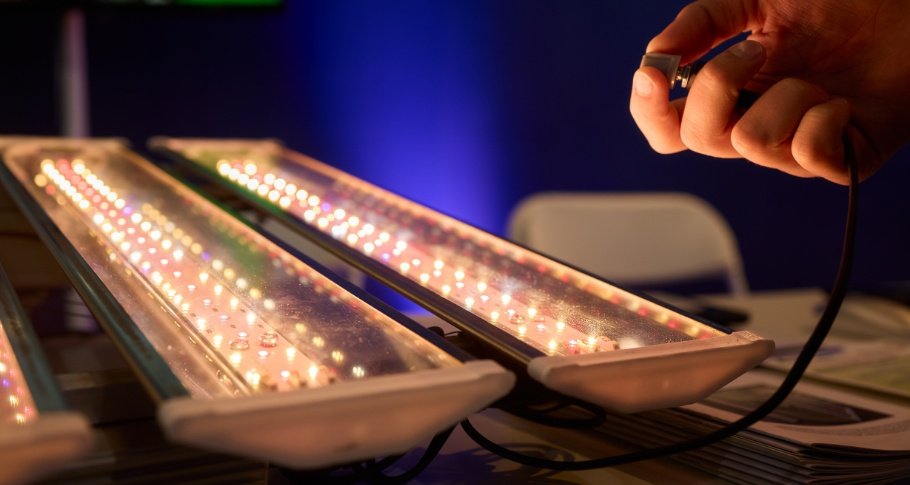
Understanding Your B2B Lighting Buyers Journey
Successful digital marketing for LED manufacturers begins with understanding how buyers discover, evaluate, and purchase lighting solutions.
Stage 1: Problem Recognition (Awareness)
Buyer Needs: Energy efficiency improvements, lighting upgrades, new construction requirements
Digital Touchpoints:
- Educational blog content about LED benefits
- Industry reports and whitepapers
- Social media thought leadership
- Search queries like "how to reduce lighting energy costs"
Stage 2: Solution Research (Consideration)
Buyer Needs: Technical specifications, product comparisons, supplier evaluation
Digital Touchpoints:
- Detailed product pages with specifications
- Case studies and customer testimonials
- Comparison guides and calculators
- Video demonstrations and virtual tours
Stage 3: Supplier Selection (Decision)
Buyer Needs: Pricing, technical support, delivery timelines, warranties
Digital Touchpoints:
- Contact forms and quote requests
- Live chat and technical support
- Customer references and certifications
- Easy-to-find contact information
💡 Pro Tip: Map your content strategy to each stage of this journey for maximum conversion impact.
Best Digital Marketing Strategies for LED & Lighting Equipment Manufacturers
The lighting industry's digital transformation demands sophisticated marketing approaches that address the unique challenges of B2B technical sales. LED manufacturers face increasingly complex buyer journeys, longer sales cycles, and highly technical decision-making processes. Success requires a multi-layered strategy that combines industry expertise with cutting-edge digital tactics.
Modern lighting procurement teams research extensively before making contact with suppliers. They evaluate energy efficiency claims, compare technical specifications, assess installation requirements, and scrutinize sustainability credentials—all before initiating vendor conversations. This shift demands comprehensive digital strategies that educate, inform, and build trust throughout extended evaluation periods.
1. Web Development for LED & Lighting Equipment Manufacturers
Your website functions as a digital showroom, technical library, and lead generation engine simultaneously. LED manufacturers require websites that handle complex product catalogs while converting technical visitors into sales conversations.
Essential Technical Website Features: Modern lighting websites must serve both human visitors and search engines while handling complex technical information efficiently.
- Interactive Product Configurators: Allow prospects to specify beam angles, color temperatures, and mounting options
- Real-Time Inventory Integration: Display availability for project planners working with tight deadlines
- Technical Specification Downloads: Organized access to IES files, CAD drawings, and specification sheets
- Energy Savings Calculators: Tools that demonstrate ROI for specific applications and usage patterns
- Live Technical Support Chat: Connect prospects with lighting specialists for complex application questions
Conversion Rate Optimization Elements: Every page element should guide technical visitors toward sales conversations while providing the detailed information they require.
- Trust Signal Integration: Prominently display certifications, warranties, and industry partnerships
- Social Proof Placement: Customer testimonials and case studies positioned throughout the user journey
- Clear Call-to-Action Strategy: Multiple conversion opportunities from sample requests to technical consultations
- Progressive Information Architecture: Logical flow from general categories to specific technical details
2. SEO for LED & Lighting Equipment Manufacturers
Search engine optimization for lighting manufacturers operates in a highly technical environment where precision matters. Technical specifications, certification requirements, and energy efficiency standards create complex keyword landscapes requiring specialized expertise.
Technical SEO Architecture: Your website's technical foundation determines search visibility for technical queries with high commercial intent.
- Product Schema Markup: Structured data for specifications, certifications, and energy ratings that enable rich snippets
- Technical Documentation SEO: Optimized specification sheets, installation guides, and compliance documents
- Site Speed Optimization: Fast-loading product catalogs essential for mobile users researching on job sites
- Mobile-First Design: Responsive interfaces for architects and engineers accessing specifications from various devices
Advanced Content SEO Strategies: Content optimization goes beyond basic keyword targeting to address the full spectrum of lighting-related searches.
- Long-Tail Commercial Keywords: "LED high bay lights for 30-foot ceilings" captures specific technical requirements
- Problem-Solution Content: Address common lighting challenges with solution-oriented content that ranks for pain point searches
- Comparison Content: "LED vs Fluorescent" and "Smart Lighting vs Traditional Controls" capture evaluation-stage searches
- Application-Specific Landing Pages: Dedicated pages for healthcare lighting, industrial applications, outdoor installations
International SEO Complexity: Global lighting manufacturers must navigate regional certification standards, voltage requirements, and market-specific applications.
- Multi-Language Technical Documentation: Accurate translations of complex specifications and compliance information
- Regional Certification Pages: Dedicated content for CE marking, UL listings, Energy Star ratings by market
- Local Market Case Studies: Region-specific success stories demonstrating cultural and technical understanding
- International Shipping Information: Clear documentation of global logistics capabilities and restrictions
Ready to 🚀 Grow Your LED & Lighting Business Online?
3. PPC & Performance Marketing for Pharmaceutical Machinery Manufacturers
Pay-per-click advertising in the lighting sector requires sophisticated targeting to reach decision-makers at optimal moments during lengthy procurement cycles. High-value lighting projects justify premium cost-per-click investments when campaigns target qualified prospects effectively.
Google Ads Optimization for Technical Products: Lighting manufacturers benefit from campaign structures that separate technical audiences from general commercial searches.
- High-Intent Search Campaigns: Target specific product needs like "explosion-proof LED fixtures" or "LEED-certified office lighting"
- Shopping Campaigns for Technical Products: Showcase product specifications and certifications in visual shopping results
- Display Remarketing with Technical Content: Re-engage website visitors with case studies and technical resources
- YouTube Advertising for Visual Demonstrations: Video content showcasing lighting performance in real applications
LinkedIn Advertising for B2B Decision-Makers: LinkedIn's professional targeting capabilities enable precise reach to lighting industry stakeholders.
- Job Function Targeting: Reach facilities managers, electrical engineers, architects, and procurement specialists
- Industry-Specific Campaigns: Separate campaigns for healthcare, education, manufacturing, and commercial real estate
- Account-Based Marketing: Target specific companies in your pipeline with personalized content
- Sponsored Content Strategy: Promote technical whitepapers and industry insights to build thought leadership
Advanced Targeting Methodologies:
- MCompany Size Targeting: Different messaging for enterprise facilities versus small business needs
- Geographic Precision: Regional campaigns addressing local energy codes and utility incentive programs
- Behavioral Targeting: Reach prospects based on lighting industry website visits and content engagement
- Lookalike Audiences: Expand reach to prospects similar to your best customers based on firmographic data
4. Social Media Strategy for LED & Lighting Equipment Manufacturers
Social media builds brand awareness and showcases lighting solutions in real-world applications while reaching key decision-makers throughout the extended B2B buying process.
Platform-Specific Strategies:
LinkedIn (Primary B2B Focus):
- Share industry insights and sustainability trends
- Showcase commercial lighting project case studies
- Engage with architecture and construction professionals
- Promote technical whitepapers and webinar content
- Connect with facilities managers and procurement specialists
- Post thought leadership content about energy efficiency
YouTube:
- Product demonstration videos showing performance comparisons
- Installation tutorials and maintenance guides
- Customer success stories with ROI metrics
- Behind-the-scenes manufacturing and quality control content
- Technical webinar recordings for ongoing education
Instagram:
- Visual showcase of striking lighting installations
- Before/after transformation photos demonstrating impact
- Employee spotlight and company culture content
- Stories highlighting quick technical tips and industry facts
- User-generated content from satisfied customers
Social media success for lighting manufacturers focuses on building relationships with technical buyers rather than viral content, emphasizing consistent engagement with qualified prospects.
5. Email Marketing for LED & Lighting Equipment Manufacturers
Email marketing nurtures leads through the extended B2B sales cycle typical in the lighting industry, delivering the highest ROI among digital channels.
Strategic Email Campaign Types:
Welcome Series:
- Introduce company capabilities and core lighting solutions
- Provide technical resources and specification guides
- Share relevant industry case studies and testimonials
Educational Series:
- Monthly technical guides addressing complex lighting challenges
- Industry best practices and compliance updates
- Energy efficiency trends and cost-saving strategies
Product Updates:
- New LED product releases with technical specifications
- Feature announcements and certification updates
- Seasonal lighting solutions and applications
Advanced Nurture Campaigns:
- Long-term stay-in-touch sequences for 6-18 month sales cycles
- Automated follow-up based on content engagement
- Personalized technical content based on industry vertical
Segmentation Strategy: Email success requires sophisticated segmentation by role (facilities managers, architects, engineers), industry application (healthcare, manufacturing, retail), and project timeline to deliver relevant content that advances prospects through the complex lighting procurement process.
6. B2B Lead Generation for LED & Lighting Equipment Manufacturers
Lead generation in the lighting industry requires a sophisticated understanding of multiple buyer personas, from facilities managers seeking cost reductions to architects designing sustainable buildings. Each persona has distinct pain points, evaluation criteria, and preferred information sources.
Advanced Lead Generation Framework:
Technical Content Marketing That Converts: LED manufacturers who position themselves as educational resources capture attention earlier in the buyer journey. This approach builds trust and demonstrates expertise before competitors enter consideration.
- Lighting Design Calculators: Interactive tools that help prospects estimate lumens, energy savings, and payback periods
- Compliance Guides: Region-specific documentation addressing building codes, energy standards, and safety regulations
- ROI Modeling Tools: Custom calculators showing total cost of ownership comparisons between LED and traditional lighting
- Installation Planning Resources: Step-by-step guides for different facility types and lighting applications
Gated Premium Resources Strategy: High-value content serves as lead magnets while qualifying prospect intent and budget authority.
- LED Specification Databases: Comprehensive product comparison tools with filtering capabilities
- Energy Audit Templates: Standardized assessment forms for facilities managers
- Retrofit Planning Kits: Complete planning resources including timelines, budgets, and implementation strategies
- Certification Guides: Documentation for LEED points, Energy Star compliance, and utility rebate programs
Virtual Engagement Programs: Digital demonstrations and educational sessions establish thought leadership while generating qualified leads.
- Live Product Demonstrations: Real-time showcases of lighting performance in controlled environments
- Technical Webinar Series: Monthly educational sessions addressing industry challenges and emerging technologies
- Virtual Facility Tours: 360-degree experiences showcasing manufacturing capabilities and quality standards
- Expert Q&A Sessions: Regular opportunities for prospects to engage directly with lighting specialists
Industry-Specific Lead Magnets:
- "Healthcare Lighting Compliance Checklist" (targeting medical facilities)
- "Industrial Safety Lighting Standards Guide" (manufacturing sector focus)
- "Educational Facility LED Retrofit Calculator" (schools and universities)
- "Retail Lighting Design Psychology Handbook" (commercial retail applications)
7. Content Marketing for LED & Lighting Equipment Manufacturers
Content marketing for LED manufacturers requires balancing technical depth with accessibility. Your content strategy should demonstrate expertise while remaining useful to various stakeholders in complex purchasing decisions.
Technical Content That Drives Business Results: Educational content positions your company as a trusted advisor while capturing organic search traffic for high-value keywords.
- Application Guides: Comprehensive resources for specific lighting applications like clean rooms, sports facilities, or cold storage
- Technology Trend Analysis: Forward-looking content about smart lighting, IoT integration, and sustainability initiatives
- Cost-Benefit Studies: Data-driven content comparing lifecycle costs, energy consumption, and maintenance requirements
- Compliance Resources: Regular updates about changing regulations, energy codes, and certification requirements
Visual Content Strategy: The lighting industry's visual nature demands sophisticated visual content that showcases product performance and real-world applications.
- Before/After Case Studies: Document lighting improvements with metrics showing energy savings and visual improvement
- Interactive Lighting Simulations: Web-based tools showing how different lighting options affect space appearance
- Video Installation Guides: Step-by-step content reducing installation barriers and demonstrating ease of retrofit
- Virtual Reality Experiences: Immersive content allowing prospects to experience lighting solutions before purchase
8. Video Marketing for LED & Lighting Equipment Manufacturers
Video content excels at demonstrating lighting performance in ways that text and static images cannot match. Lighting manufacturers can leverage video to show actual illumination quality, installation processes, and real-world applications.
Strategic Video Content Types:
- Product Performance Demonstrations: Side-by-side comparisons showing light quality, color rendering, and energy consumption
- Customer Success Documentaries: In-depth case studies featuring satisfied customers discussing their lighting transformation
- Technical Installation Tutorials: Educational content that reduces installation barriers while demonstrating product reliability
- Facility Tour Videos: Behind-the-scenes content showcasing manufacturing quality and engineering expertise
9. Marketing Automation for LED & Lighting Equipment Manufacturers
Marketing automation becomes essential when managing complex B2B sales cycles that can extend 6-18 months. Lighting manufacturers must maintain engagement throughout extended evaluation periods while qualifying prospects efficiently.
Advanced Automation Strategies:
- Lead Scoring Models: Assign values based on technical content engagement, project timeline indicators, and budget authority
- Behavioral Trigger Campaigns: Automated sequences activated by specific actions like downloading technical specifications
- Sales Notification Systems: Alert sales teams when prospects demonstrate high-intent behaviors or reach scoring thresholds
- Nurture Campaign Segmentation: Different sequences for architects, facilities managers, and procurement teams based on their unique concerns
10. AI & Data Analytics for LED & Lighting Equipment Manufacturers’ Growth
Artificial intelligence transforms lighting industry marketing by enabling sophisticated prospect identification, content personalization, and predictive analytics that improve campaign performance.
AI-Powered Marketing Applications:
- Predictive Lead Scoring: Machine learning algorithms identify prospects most likely to convert based on historical patterns
- Dynamic Content Personalization: Serve relevant technical specifications and case studies based on visitor behavior
- Chatbot Implementation: AI-powered assistants provide instant responses to technical questions and qualification
- Market Intelligence Automation: Automated competitor monitoring and market trend analysis for strategic positioning
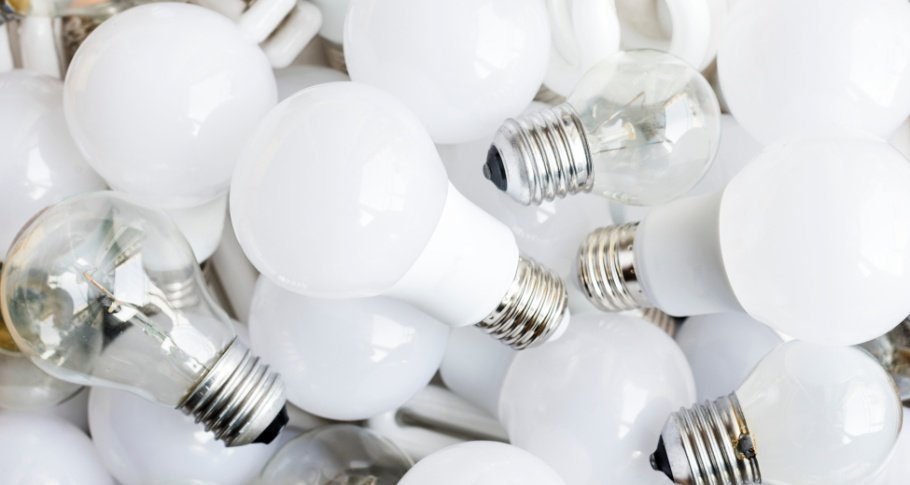
How to Measure ROI in Digital Marketing for LED & Lighting Businesses
Tracking return on investment ensures your digital marketing budget generates measurable business results.
Key Performance Indicators (KPIs)
Lead Generation Metrics:
- Cost per lead (CPL) by channel
- Lead-to-customer conversion rates
- Customer lifetime value (CLV)
- Time from lead to closing
Website Performance:
- Organic traffic growth
- Product page conversion rates
- Technical document downloads
- Quote request completions
Brand Awareness:
- Search visibility for target keywords
- Social media engagement rates
- Brand mention tracking
- Market share of voice
Attribution Modeling
Understanding which marketing touchpoints contribute to sales helps optimize budget allocation across channels.
Multi-Touch Attribution:
- First-touch attribution for awareness campaigns
- Last-touch attribution for conversion optimization
- Linear attribution for nurture campaign assessment
- Position-based attribution for comprehensive view
Ready to supercharge your LED marketing ROI? Get Your Custom Strategy
Common Digital Marketing Mistakes LED Manufacturers Make Should Avoid
Avoiding these pitfalls accelerates your digital marketing success:
1. Focusing Only on Product Features
- Mistake: Leading with technical specifications instead of customer benefits
- Solution: Lead with energy savings, cost reductions, and operational improvements
2. Neglecting Mobile Optimization
- Mistake: Desktop-only websites in an increasingly mobile world
- Solution: Responsive design with mobile-optimized product catalogs
3. Underestimating Content Marketing
- Mistake: Believing technical products don't need content marketing
- Solution: Educational content builds trust and demonstrates expertise
4. Ignoring Local SEO
- Mistake: Focusing only on national keywords
- Solution: Optimize for "LED suppliers near me" and local market terms
5. Poor Lead Nurturing
- Mistake: Expecting immediate purchases from complex B2B buyers
- Solution: Develop systematic nurture campaigns for extended sales cycles
Why Choose Professional Digital Marketing Services for Your Lighting Business?
Partnering with experienced digital marketing professionals accelerates results while avoiding costly mistakes. Wolfable specializes in manufacturing digital marketing with a deep understanding of B2B lighting industry dynamics.
Our Manufacturing Industry Expertise Includes:
- SEO & Local SEO for global and regional market penetration
- Performance Marketing with ROI-focused campaigns across platforms
- Content Marketing that educates and converts technical buyers
- Web Design & Development optimized for B2B lead generation
- AI & Automation Solutions for efficient lead management
- Digital Strategy & Consultation for comprehensive growth planning
Ready to transform your digital presence? Contact our manufacturing specialists for a customized digital marketing strategy.
Take Action: Illuminate Your Digital Marketing Success
The lighting industry's digital transformation creates unprecedented opportunities for manufacturers who act strategically. Companies implementing comprehensive digital marketing strategies see:
- 300% increase in qualified lead generation
- 250% improvement in sales cycle efficiency
- 200% growth in market visibility and brand recognition
Your Next Steps:
- Audit your current digital presence - Assess website performance, search visibility, and lead generation capabilities
- Develop buyer personas - Map your ideal customers' digital behavior and preferences
- Create a content calendar - Plan educational content that addresses buyer questions at each stage
- Implement tracking systems - Set up analytics to measure ROI and optimize performance
- Partner with experts - Work with digital marketing professionals who understand B2B manufacturing
Ready to transform your lighting business with strategic digital marketing?
Contact Wolfable today for a comprehensive digital marketing consultation tailored to your manufacturing goals.


